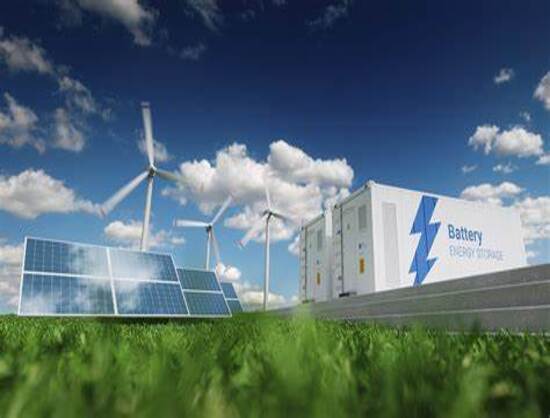Our Terms & Conditions | Our Privacy Policy
India’s Renewable Energy FDI Grows Eightfold Since FY21 to USD 3.4 Billion: CEEW-GFC – Asia Pacific
CEEW-GFC reports India’s renewable sector drew USD 3.4B FDI in FY25, an eightfold rise from FY21, driven by record green capacity, storage breakthroughs, and growing global investor appetite.
May 08, 2025. By EI News Network
India’s renewable energy sector witnessed a significant eightfold surge in foreign direct investment (FDI) since FY21, reaching a record USD 3.4 billion in FY25, according to the latest Market Handbook released by the Council on Energy, Environment and Water’s Green Finance Centre (CEEW-GFC).
The share of RE in the country’s total FDI inflows has grown remarkably, from about 1 percent in FY21 to around 8 per cent in FY25, reflecting the increasing global confidence in India’s clean energy landscape. The USD 3.4 billion inflow in the first three quarters of FY25 has nearly matched the entire FDI received in FY24, which stood at USD 3.7 billion.
The CEEW-GFC’s Market Handbook, which provides a comprehensive view of India’s electricity, green mobility, and green finance sectors, also revealed that the country added approximately 33 GW of power generation capacity in FY25. Of this, a record 89 percent or 29.5 GW was contributed by renewable sources, marking a sharp increase from 71 per cent in FY24. As a result, India’s total installed RE capacity climbed to 220 GW out of the overall 475 GW, underscoring the accelerating transition to cleaner power. Concurrently, the share of coal and lignite in total installed power capacity dropped from 49 per cent (218 GW) in FY24 to 47 per cent (222 GW) in FY25.
Gagan Sidhu, Director at CEEW-GFC, emphasised that India’s energy transition has reached a critical juncture, with RE emerging as the dominant contributor to new power capacity. Notably, around 42 GW of renewable energy was auctioned in FY25, with nearly 59 per cent of it comprising innovative formats like firm and dispatchable renewables (FDRE) and hybrid models, which are designed to improve grid stability and resilience amid rising RE penetration. While the total number of tenders issued by Renewable Energy Implementing Agencies (REIAs) declined to around 33 GW in FY25 from 47.5 GW in FY24, much of the drop was attributed to limited wind project tenders, even as state-level tender activity remained robust.
A major highlight in FY25 was the continued innovation in renewable auctions, especially with storage integration. About 24 per cent of total completed RE auctions included energy storage components, reflecting the sector’s growing technological sophistication. This was further supported by sovereign green bond auctions conducted by the Reserve Bank of India, totalling USD 3.8 billion across six issuances, boosting green finance availability.
Shalu Agrawal, Director of Programmes at CEEW, pointed to several promising trends, including the rapid discovery of competitive energy storage pricing, which could unlock affordable grid-scale renewable deployment. She noted that FY25 might mark an inflection point for storage, similar to the transformative drop in solar costs a decade ago. The year saw the conclusion of seven standalone battery energy storage system (BESS) tenders, with the lowest discovered tariff plunging to INR 1.84 per unit, down by 54 per cent from FY24, supported by viability gap funding (VGF). In total, 16 standalone BESS tenders were issued in FY25, and the government has approved VGF for 4,000 MWh of energy storage capacity by 2030–31.
India’s rising power demand also stood out, with peak power hitting a record 250 GW in the first quarter of FY25 and remaining above 220 GW throughout the year. Total electricity generation increased by approximately 5 per cent compared to FY24. Renewables, including large hydro, now contribute roughly 21 per cent to the country’s average daily power generation, further solidifying their place in India’s energy mix.
On the mobility front, electric vehicle (EV) adoption continued to gain momentum. FY25 saw the sale of over 1.9 million EVs, marking a 17 per cent increase from the previous year. October 2024 and March 2025 each recorded over two lakh EV sales, making them landmark months for the clean mobility push. By the end of FY25, India had achieved approximately 95 per cent of its EV sales target under the PM E-DRIVE scheme, reinforcing its critical role in expanding sustainable transport solutions.
[ad_1]
Images are for reference only.Images and contents gathered automatic from google or 3rd party sources.All rights on the images and contents are with their legal original owners.
[ad_2]



Comments are closed.